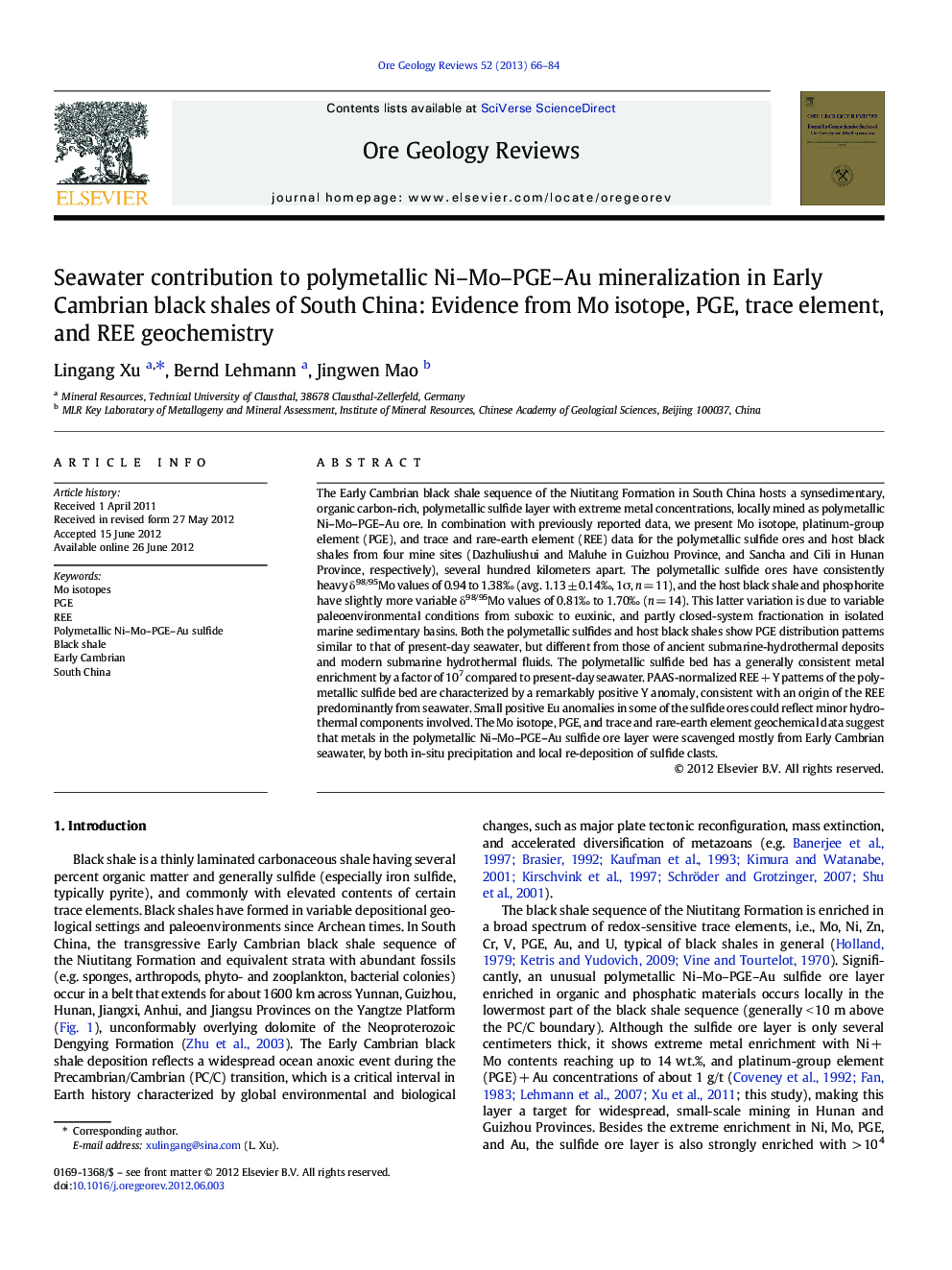| کد مقاله | کد نشریه | سال انتشار | مقاله انگلیسی | نسخه تمام متن |
|---|---|---|---|---|
| 4697595 | 1637251 | 2013 | 19 صفحه PDF | دانلود رایگان |

The Early Cambrian black shale sequence of the Niutitang Formation in South China hosts a synsedimentary, organic carbon-rich, polymetallic sulfide layer with extreme metal concentrations, locally mined as polymetallic Ni–Mo–PGE–Au ore. In combination with previously reported data, we present Mo isotope, platinum-group element (PGE), and trace and rare-earth element (REE) data for the polymetallic sulfide ores and host black shales from four mine sites (Dazhuliushui and Maluhe in Guizhou Province, and Sancha and Cili in Hunan Province, respectively), several hundred kilometers apart. The polymetallic sulfide ores have consistently heavy δ98/95Mo values of 0.94 to 1.38‰ (avg. 1.13 ± 0.14‰, 1σ, n = 11), and the host black shale and phosphorite have slightly more variable δ98/95Mo values of 0.81‰ to 1.70‰ (n = 14). This latter variation is due to variable paleoenvironmental conditions from suboxic to euxinic, and partly closed-system fractionation in isolated marine sedimentary basins. Both the polymetallic sulfides and host black shales show PGE distribution patterns similar to that of present-day seawater, but different from those of ancient submarine-hydrothermal deposits and modern submarine hydrothermal fluids. The polymetallic sulfide bed has a generally consistent metal enrichment by a factor of 107 compared to present-day seawater. PAAS-normalized REE + Y patterns of the polymetallic sulfide bed are characterized by a remarkably positive Y anomaly, consistent with an origin of the REE predominantly from seawater. Small positive Eu anomalies in some of the sulfide ores could reflect minor hydrothermal components involved. The Mo isotope, PGE, and trace and rare-earth element geochemical data suggest that metals in the polymetallic Ni–Mo–PGE–Au sulfide ore layer were scavenged mostly from Early Cambrian seawater, by both in-situ precipitation and local re-deposition of sulfide clasts.
Journal: Ore Geology Reviews - Volume 52, August 2013, Pages 66–84